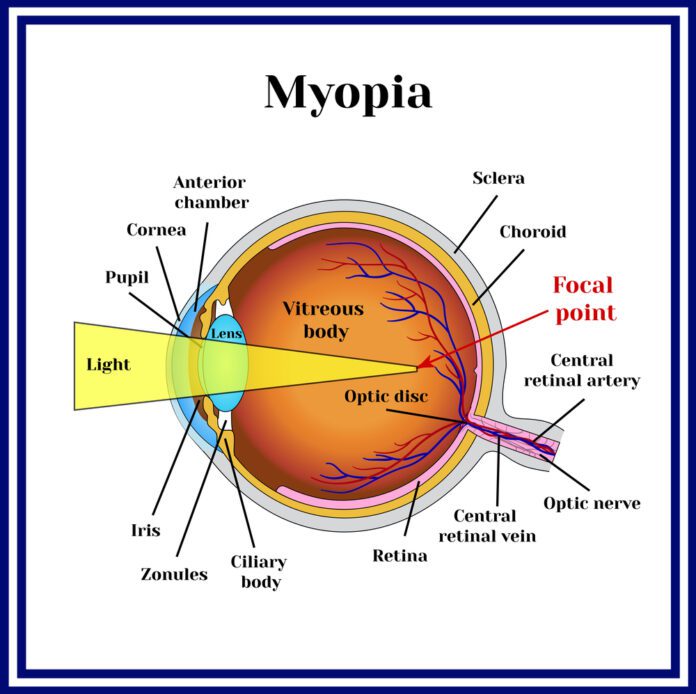Overview Of Nearsightedness (Myopia)
Nearsightedness is when light entering the eye is focused incorrectly. This makes distant objects appear blurred. Nearsightedness is a type of refractive error of the eye.
If you are nearsighted, you have trouble seeing things that are far away.
Commonly Associated With
Myopia; Shortsightedness; Refractive error – nearsightedness
Causes Of Nearsightedness (Myopia)
People are able to see because the front part of the eye bends (refracts) light and focuses it on the retina. This is the inside of the back surface of the eye.
Nearsightedness occurs when there is a mismatch between the focusing power of the eye and the length of the eye. Light rays are focused in front of the retina, rather than directly on it. As a result, what you see is blurry. Most of the eye’s focusing power comes from the cornea.
Nearsightedness affects males and females equally. People who have a family history of nearsightedness are more likely to develop it. Most eyes with nearsightedness are healthy. However, but a small number of people with severe nearsightedness develop a form of retinal degeneration.
Symptoms Of Nearsightedness (Myopia)
A nearsighted person sees close-up objects clearly, but objects in the distance are blurred. Squinting will tend to make far away objects seem clearer.
Nearsightedness is often first noticed in school-aged children or teenagers. Children often cannot read the blackboard, but they can easily read a book.
This condition gets worse during the growth years. People who are nearsighted need to change glasses or contact lenses often. Nearsightedness most often stops progressing as a person stops growing in his or her early twenties.
Other symptoms may include:
- Eyestrain
- Headaches (uncommon)
Exams & Tests
A nearsighted person can easily read the Jaeger eye chart (the chart for near reading) but has trouble reading the Snellen eye chart (the chart for distance).
A general eye exam or standard ophthalmic exam may include:
- Eye pressure measurement (tonometry)
- Refraction test, to determine the correct prescription for glasses
- Retinal examination
- Slit-lamp exam of the structures at the front of the eyes
- Test of color vision, to look for possible color blindness
- Tests of the muscles that move the eyes
- Visual acuity, both at a distance (Snellen), and close up (Jaeger)
Treatment Of Nearsightedness (Myopia)
Wearing eyeglasses or contact lenses can help shift the focus of the light image directly onto the retina. This will produce a clearer image.
The most common surgery to correct myopia is LASIK. An excimer laser is used to reshape (flatten) the cornea, shifting the focus.



